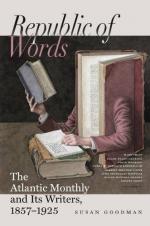In the new work on Heat we are introduced to Professor Tyndall upon the lecturing-platform, where he follows up some of the inquiries started in the “Glaciers” in a systematic and comprehensive manner. His problem is, the nature and laws of Heat, its relation to other forms of force, and the part it plays in the vast scheme of the universe: an imposing task, but executed in a manner worthy of the gifted young successor of Faraday as Professor of Natural Philosophy in the Royal Institution of Great Britain.
A comparison of the volume before us with any of the previously published treatises on Heat will afford a striking and almost startling proof of the present activity of inquiry, and the rapid progress of scientific research. The topics treated are the same. The first seven lectures of the course deal with thermometric heat, expansion, combustion, conduction, specific and latent heat, and the relation of this force to mechanical processes; while the remaining five treat of radiant heat, the law and conditions of its movement, its influence upon matter, its relations to other forces, terrestrial and solar radiation, and the thermal energies of the solar system. But these subjects no longer wear their old aspect. Novel questions are presented, starting fresh trains of experiment; facts assume new relationships, and are interpreted in the light of a new and higher philosophy.
The old view of the forces, which regarded them as material entities, may now be regarded as abandoned. Light, Heat, Electricity, Magnetism, etc., which have hitherto been considered under the self-contradictory designation of “Imponderable Elements,” or immaterial matter, are now, by common consent, beginning to be ranked as pure forces; having passed through their material stage, they are regarded as kindred and convertible forms of motion in matter itself. The old notions, that light consisted of moving corpuscles, and that heat, electricity, and magnetism were produced by the agency of various fluids, have done good service in times past; but their office was only provisional, and, having served to advance the philosophy of forces beyond themselves, they must now take rank among the outgrown and effete theories which belong to the infantile period of science. This change, as will be seen, involves the fundamental conceptions of science, and is nothing less than the substitution of dynamical for material ideas in dealing with the phenomena of Nature.
The new views, of which Professor Tyndall is one of the ablest expositors, are expressed by the terms “Conservation and Correlation of Forces.” The first term implies that force is indestructible, that an impulse of power can no more be annihilated than a particle of matter, and than the total amount of energy in the universe remains forever the same. This principle has been well characterized by Faraday as “the highest law in physical science which our faculties permit us to perceive.” The




